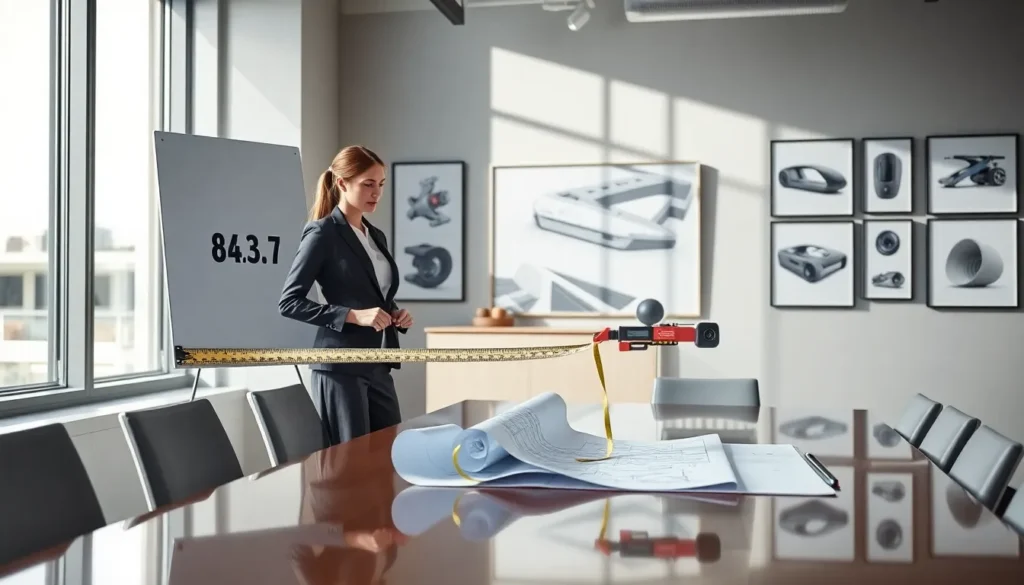
Ever found yourself measuring the space for a new project and wishing you had a degree in geometry? Enter 80.3×64.7, a dimension that can make or break your designs, but don’t worry: it’s simpler than it sounds. Just think of it as a friendly square (or rectangle) that helps create balance in your projects. Whether you’re an industry veteran or a curious newbie, understanding these figures isn’t rocket science: it’s crucial. Let’s immerse and explore the treasure trove of insights hidden within these numbers.
80.3×64.7

The measurement of 80.3×64.7 refers to a specific dimension typically used in various industries to denote size, often in millimeters or inches. When expressed in millimeters, this translates to about 80.3 mm in length and 64.7 mm in width. This size is common in contexts where precision and dimensions matter greatly, such as manufacturing, architecture, and design. To better grasp this, it’s often beneficial to visualize it in relation to familiar objects, like A4 paper or a small picture frame. Think of those dimensions as a compact, efficient space that can help guide design and manufacturing decisions.
The significance of these exact dimensions lies in their adaptability. Designers often use this measurement to maintain proportions without overwhelming their projects. Indeed, whether it’s about ensuring a seamless fit for electronic components or designing a sleek packaging solution, the 80.3×64.7 measurements become a vital tool in achieving the desired outcome.
Applications of 80.3X64.7 Dimensions in Various Industries
Perhaps you’re wondering where these dimensions are spotted most frequently? You’ll find 80.3×64.7 dimensions used in several key industries.
- Manufacturing: In manufacturing, precision is of utmost importance. Components designed to such dimensions ensure a perfect fit, particularly in industries like automotive and aerospace. These sectors rely heavily on these exact measurements to maintain safety and reliability.
- Construction: Similarly, architects and builders often refer to dimensions like 80.3×64.7 when creating blueprints. Correct proportions can significantly affect the overall aesthetic and functionality of a structure.
- Graphic Design: Graphic designers frequently work with specific dimensions for layouts and printed materials. Using dimensions like 80.3×64.7 can make sure that graphics are sharply defined and properly aligned, ensuring a polished finish.
- Electronics: The tech world also sees this measurement in the design of circuit boards and mechanical components, where every millimeter counts toward performance and efficiency.
As evident, 80.3×64.7 dimensions are instrumental across multiple sectors, proving just how interconnected modern industries are through a shared language of precise measurements.
Comparative Analysis: 80.3X64.7 Versus Other Standard Sizes
While the 80.3×64.7 dimensions may appear unique, it’s essential to understand how they stack up against other common measurement standards. For instance, when juxtaposed with the more traditional A4 size (210×297 mm), 80.3×64.7 offers a more compact canvas. In contrast, industry-standard dimensions often cater to bulkier items and larger designs, while the smaller figures excel in settings where a minimalist approach is favored.
Take the comparison further with European sizes like the ISO B series or US letter sizes, where each serves distinct purposes. The compact nature of 80.3×64.7 creates advantages in situations requiring more mobility or less visual clutter. Also, understanding these nuances allows professionals to select the best dimensions according to their specific needs.
Benefits of Using 80.3X64.7 Dimensions
Why should one adopt the 80.3×64.7 dimensions? A plethora of benefits awaits those who embrace this size.
- Enhanced Fit: As mentioned earlier, the exact measurements are invaluable for achieving precision. This size facilitates a snug fit for items ranging from packaging materials to electronic components.
- Versatile Applications: With the 80.3×64.7 sizes, versatility reigns. The dimensions suit a variety of industries, from graphics to electronics, making them a valuable part of any designer’s toolkit.
- Cost Efficiency: Adopting standard sizes often leads to less waste during production. Manufacturers who align their designs with commonly used dimensions can save significantly on resource expenditure.
- Easier Collaboration: Working with standardized sizes like 80.3×64.7 allows for smoother collaboration between teams and stakeholders. Universal measurements ensure everyone is on the same page, reducing errors and misunderstandings.
Challenges and Considerations When Using 80.3X64.7
Even though their advantages, utilizing 80.3×64.7 dimensions comes with its fair share of challenges.
- Limited Use Cases: While versatile, this dimension may not suit every application. For instance, larger projects may require sizes beyond the compact realm of 80.3×64.7, leaving some designers in a bind.
- Misinterpretation Risks: Dimensions can sometimes lead to misinterpretations, especially when switching between metric and imperial units. A clear conversion and understanding of context remain vital.
- Market Variability: Different industries may have varying acceptance levels of these dimensions, making it crucial to gauge suitability before proceeding.
- Innovation Constraints: Sticking strictly to established standards can foster creativity stifling. Designers are often encouraged to experiment, and strict adherence to specific dimensions, like 80.3×64.7, might sometimes put a damper on innovation.
Future Trends in Dimension Standards and Measurements
So, what’s on the horizon for dimension standards? The future of measurements is likely to witness a blend of traditional standards and customizable sizes tailored for specific applications. With advancements in technology, we may see a shift towards more dynamic dimensions that adapt to evolving needs. Also, industries will continue to emphasize eco-friendly practices and efficient uses of resources, which may further refine the measurements we often consider standard. This trend aims to reduce waste while maximizing usability and efficiency.












